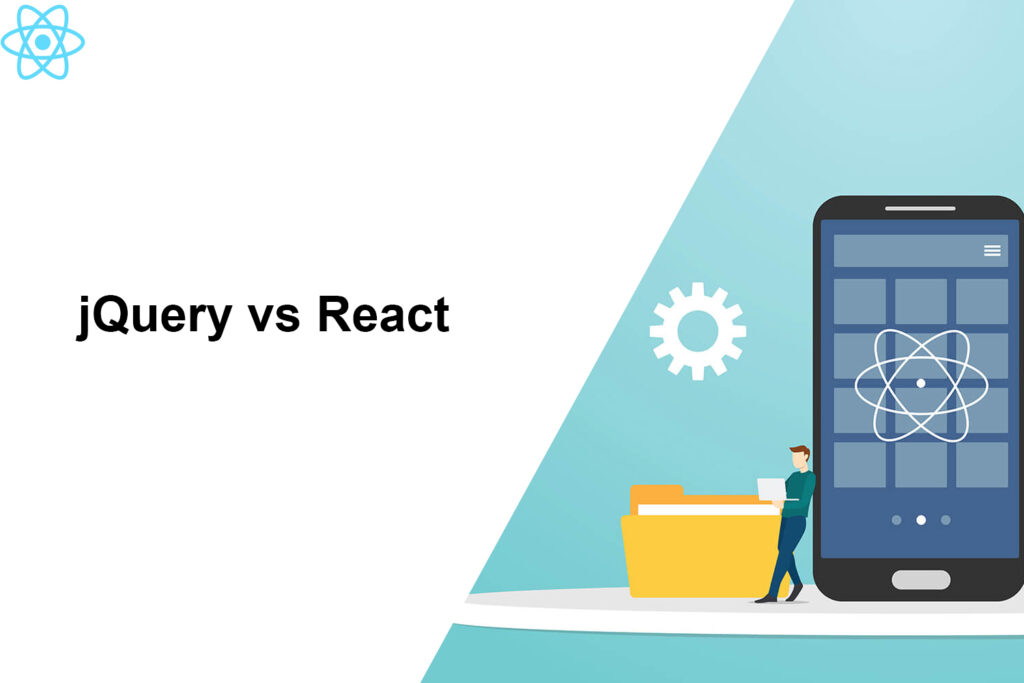Introduction
When it comes to web development, there are a few different options you have available to you- HTML, CSS, and JavaScript. With jQuery, all of these languages are used with just one framework to simplify your coding process and keep everything looking smooth and professional. On the other hand, React is a newer framework that’s worth exploring if you’re interested in seeing what this new technology can offer.
Keep reading to learn how both of these frameworks differ from one another and which one might be right for your project!
What is jQuery?
jQuery is an open-source JavaScript library that allows you to simplify your coding process. Created by John Resig back in 2006, jQuery has since become one of the most widely used JavaScript frameworks around. It’s free to use and compatible with pretty much any modern browser (that includes IE8+).
jQuery has many features like
- Supports HTML/DOM manipulation
- Wraps HTML event methods
- AJAX calls are simplified
- Runs exactly the same on almost all major browsers

What is React?
React is an open-source JavaScript library that was created by Facebook and Instagram in 2013. This framework allows you to create fast, smooth user interfaces (UIs) and is also very useful for creating large web apps with multiple pages or views.
At the time of this writing, React has over 100,000 stars on Github and it’s also used on some of the world’s most popular sites including Facebook, Netflix, Airbnb, Imgur, Dropbox, Reddit, Codecademy and more.
Features
- Gives developer easier access to React code, snippets, and component where they can create specific parts for the UI
- With using JSX, directly manipulate DOM
- Using virtual DOM, where helps improve performance
- React library has specific UI function a developer needs
- Growing everyday
If you want to learn more I have an article about React in a more explained way
What is the difference between jQuery and React?
While both of these frameworks offer a lot of the same benefits, there are some key differences that make each one unique.
Speed
React is known for being very fast and its performance puts more emphasis on speed. This is especially apparent during the initial rendering stage, where React is able to run at 60fps. What this means for web developers is that they can now create lightning-fast animations and UIs with ease. In contrast, jQuery’s additional features result in a slightly lower performance since they require more complicated coding techniques to work correctly.
Library Size
jQuery is a library of JavaScript code that’s been “minified” so it can be incorporated into your web page. This format is smaller and requires less coding knowledge to implement. React on the other hand, is not a library or plugin that you can just download and activate with a click- rather, it’s a framework that you include when you build your own React app. This means that the library size is usually larger and requires a bit more coding knowledge to implement correctly.
Larger Applications
React was built to work best in large single-page applications or apps that have multiple views/pages. This is because React works by having the view directly communicate with the JavaScript code.
In comparison, jQuery can run in most web browsers and usually doesn’t need to communicate with your code directly since it’s able to modify HTML elements after they’ve already been created.

NPM Packages
React offers an open-source platform called NPM that allows developers to create their own React packages or apps. This means that anyone can build and share components with one another, creating a community of custom code that you can use in your web projects.
jQuery, on the other hand, doesn’t offer any NPM packages so it doesn’t have as big of a community as React does.
So which one is right for you?
Depending on your project, either framework could be a good choice for you to use. If you’re interested in creating large web apps that have multiple views or pages then React will likely be the better option. This is because it offers faster load times, allows for smooth 60fps animations and also incorporates other tools such as Redux and Flux.
If you’re more interested in creating smaller web apps, websites or just a customized jQuery plugin that doesn’t need to communicate directly with your code, then jQuery will probably be the better option.
Creating a simpler web app is also another reason why there are still lots of developers who choose to go with jQuery. In fact, for many years this was the only option available- new developers would learn jQuery before they understood how to use other JavaScript frameworks.
Conclusion
Now that React has arrived, it’s becoming more common for developers to choose React over jQuery (especially for larger web apps). Just like with any technology, however, you should try learning both of these new frameworks since they offer many benefits that can help you in the long term.





